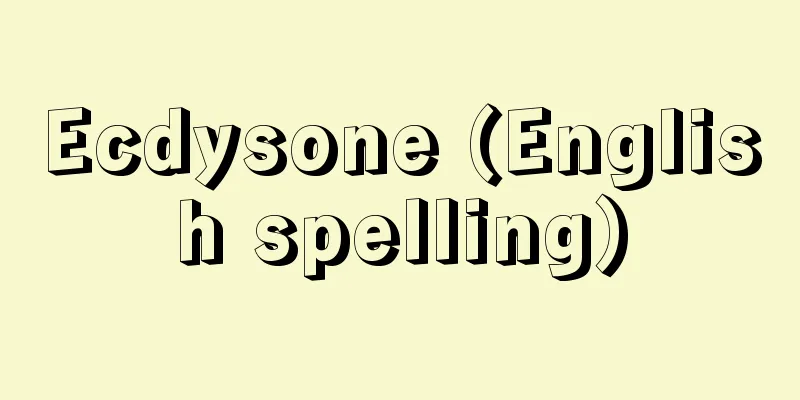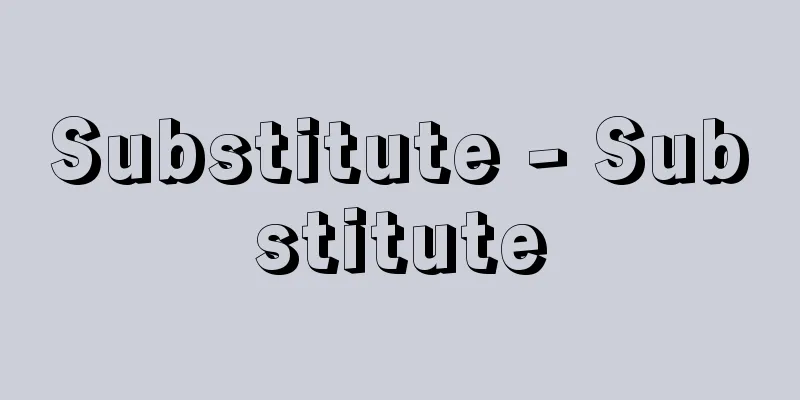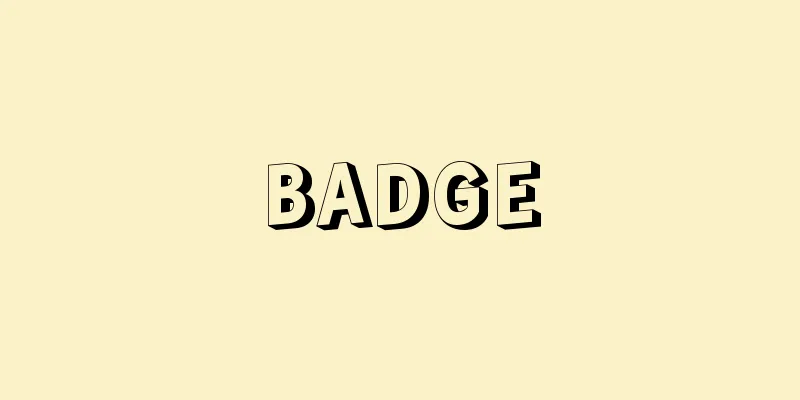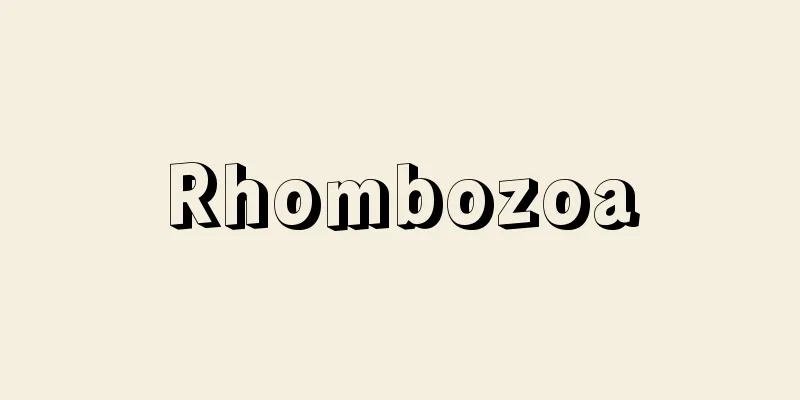Memory - Kioku (English spelling) memory

|
A mental function consisting of three stages: memorization, retention, and retrieval. Memorization, also called encoding, is the process of converting and incorporating information from the outside world so that it can be retained. Memorized information needs to be stored until it is needed and the process of storing information in this way is called retention or storage. Retained information needs to be retrieved in order to be used, and this process is called remembering or retrieval. Forgetting refers to a state in which information that has been memorized cannot be recalled later. There are two possible causes for this. One is a failure of retention, in which the information cannot be recalled because it has been lost, and the other is a failure of the retrieval process itself, in which the information cannot be retrieved even though it has been retained. The former is said to be a problem of the availability of information, and the latter is a problem of accessibility (Gregg, V., 1986). A failure of memory caused by a failure to memorize is not called forgetting. [Methods of measuring memory] When investigating how memory works, the above three stages are often set up artificially. First, the participants in the experiment are presented with the material to be memorized and asked to memorize it. This is called the study phase. After a certain amount of time has passed since the study phase, they are asked to recall the material in some way. This is called the test phase. The time between the study phase and the test phase is called the retention interval. There are various tasks used in the test phase, but recall and recognition are the most common tasks. In a recall task, participants are required to generate the memorized materials they experienced during the learning stage, either verbally, in writing, or by action. In particular, a task that requires participants to recall the memorized materials in the order in which they were presented is called a serial recall task, and a task in which participants recall the materials regardless of the order is called a free recall task. In addition, a task that requires participants to recall the materials by providing a part or attribute of the memorized materials as a cue is called a cued recall task. In general, when several or more memorized materials are presented one by one in order, the recall rate is higher for the materials presented earlier and the materials presented later. The former is called the primacy effect, and the latter is called the recency effect. Furthermore, a serial position curve, which is a plot of the recall results in the order of presentation, can visually show the serial position effect mentioned above. These effects are known to be robust and to be affected by various experimental manipulations, and have long been an important research topic in psychology. In recognition tasks, participants are asked to identify memorized materials presented in the learning phase from among the materials presented in the test phase. In yes-no recognition, participants are presented with either memorized materials presented in the learning phase or materials that were not presented, one by one, and are asked to judge whether each is an old item (presented memorized material) or a new item (unpresented material). In forced-choice recognition, participants are presented with multiple items, including one old item, and are asked to select the old item from among them. In batch recognition, participants select an old item from a selection that includes multiple old items and multiple new items. These recognition tasks produce four types of responses: hits, where an old item is correctly identified as the old item; misses, where an old item is incorrectly identified as the new item; correct rejections, where a new item is correctly identified as the new item; and false recognitions or false alarms, where a new item is incorrectly identified as the old item. In forced-choice and batch-type recognition tasks, judgments on multiple items are made in parallel, making it difficult to evaluate these four types of responses properly. Therefore, in psychology experiments, yes-or-nothing recognition tasks are often used. Empirically, recognition seems to be an easier task than recall, and recall and recognition are thought to be based on similar mechanisms. However, due to the phenomenon of recognition failure, where memorized material that can be recalled cannot be recognized (Tulving, E., & Thomson, DM, 1973), and the fact that experimental manipulations that increase recall rates decrease recognition scores, recognition cannot simply be considered to be easier to recall, and it can be concluded that the two tasks involve somewhat different mechanisms. In addition, memory functions are often measured using methods called indirect priming and direct priming. [Types of memory] There are several types of memory, and various methods of classification exist. Broadly speaking, there are classifications based on the "retention time" and classifications that focus on the "nature of recall." In classification based on retention time, there are sensory memories, which are thought to have an extremely short retention time of less than a few seconds, short-term memories, which are thought to have a retention time of a few to tens of seconds, and long-term memories, which are assumed to have a long retention time of several minutes to several hours, or several months to several years (in some cases, permanent). Sensory memory is the function of storing sensory information before it is categorized, and it is believed that there are separate sensory memory systems corresponding to each sensory modality. Iconic memory, which lasts for only a few hundred milliseconds, corresponds to the storage of visual information, while echoic memory, which lasts for several seconds, corresponds to the storage of auditory information. Although the storage time is short, it is believed that the amount of information stored at one time is enormous. Short-term memory is characterized by the constraint that it can only hold information for a short period of time, from a few seconds to a few tens of seconds, and by the severe limit to the amount of information that can be held at one time. The limit of short-term memory capacity is often estimated by a memory span task. In this task, numbers or words are often used as memorization material, and the subject is asked to immediately recall the presented material. The maximum number of items that can be accurately recalled is the indicator, and this value is called the memory span. According to Miller and GA, although there are individual differences, it is usually within the range of 7 ± 2. However, this value is when strategies such as active rehearsal of the presented material are used, and if such strategies are hindered in some way, the value will be around 4, and some researchers consider this to be the true memory span value. Long-term memory is hypothesized to have the characteristic of being able to retain information for long periods of time, as well as the property of having no limit to its capacity. Based on the contents of memory, it is divided into declarative memory, which is said to be able to be expressed linguistically, and non-declarative memory, which is difficult to express linguistically. The former is further classified into episodic memory and semantic memory. A representative example of non-declarative memory is procedural memory, which refers to memories related to the methods of actions, such as how to swim, how to ride a bicycle, and how to input data into a word processor. According to classifications that focus on the nature of recollection, memories that involve recollection of learning episodes, as measured by memory tasks such as recall and recognition, are called explicit memory. In these tasks, participants are instructed to "recall" and are asked to recall the learning episodes. In other words, conscious recollection is required. On the other hand, memories that do not involve conscious recollection of the learning episodes are called implicit memory. Implicit memory is measured by tasks that do not instruct participants to "recall," such as perceptual identification tasks and word completion tasks. In a typical word completion task, an incomplete word such as "し□り□く" is presented and participants are asked to identify what this word is. If participants have seen the word "し□り□く" beforehand, they will be more likely to answer correctly than if they have not seen the word before. This is called the direct priming effect or the repeated priming effect. Interestingly, this direct priming effect can be seen even if participants cannot recall having seen the word "し□り□く" beforehand. This means that conscious recall of episodes (explicit memory) and direct priming (implicit memory) are independent. The direct priming effect is a phenomenon that enables efficient information processing required from the environment, and is thought to reflect the function of the perceptual representation system (PRS). [Recall and Memory Reconstruction] The characteristic of memory recall is that it is active and, as a result, consists of a reconstruction process. Perception is also influenced by active, top-down processing based on past experiences and expectations, but this is particularly evident in memory. According to Bartlett, F.C. (1932), what we recall is not the specific experience of past events themselves, but the general theme, and when we try to recall something, we fill in the details with things that match that theme or schema. The reconstruction process refers to this process of supplementing insufficient memory. A schema is a structure of knowledge or a cognitive framework formed by the accumulation of experience, which functions well in everyday life that does not deviate from past experiences and makes the reconstruction process effective. The existence of a schema allows our cognitive system to process a huge amount of information without excessive strain. On the other hand, information that does not match the schema is often transformed to fit the schema. Bartlett had British university students read unfamiliar stories twice at their own pace, and then asked them to recall them over and over again with various retention periods in between. The results of this repeated recall showed consistent trends, such as sentences becoming shorter, and that supernatural and non-conforming elements of the story were transformed. For example, "something black came out of his mouth" was transformed into "foamed at the mouth." The transformation of memories based on schemas, knowledge, and preconceptions can also be seen in phenomena such as memory distortion and false memories in eyewitness testimony. →Evolution of memory →Schema →Knowledge →Everyday memory →Encoding →Priming effect [Saito Satoshi] Latest Sources Psychology Encyclopedia Latest Psychology Encyclopedia About Information |
|
記銘,保持,想起という三つの段階からなる心的機能。記銘memorizationとは,符号化encodingともいい,外界の情報を保持できるように変換して取り込むことである。記銘された情報は必要な時点で取り出されるまで蓄えられている必要があるが,こうして情報を保管しておく働きを保持retention,または貯蔵storageとよぶ。そして,保持情報が利用されるためにはこれを取り出す必要があり,この過程を想起rememberingあるいは検索retrievalという。忘却forgettingとは,一度記銘された情報が後に想起できない状態を指す。その原因には二つが考えられる。一つは保持の失敗で,その情報が失われてしまったことによって想起できないもの,もう一つは想起過程そのものの失敗で,情報が保持されているのにもかかわらず検索できない場合である。前者は情報の利用可能性availabilityの問題であり,後者はアクセス可能性accessibilityの問題であるとされる(Gregg,V.,1986)。記銘されなかったことが原因である場合の記憶の失敗は,忘却とはよばない。 【記憶の測定方法】 記憶の働きを調べる場合,上記の三つの段階を人工的に設定することが多い。まず,実験の参加者に対して覚えるべき材料を提示し,記銘を求める。これを学習段階study phaseという。学習段階から一定の時間の経過後に,なんらかの方法で想起を求める。これをテスト段階test phaseとよぶ。学習段階とテスト段階の間の時間を保持期間retention intervalとよぶ。テスト段階で用いられる課題にはさまざまなものがあるが,再生recallと再認recognitionが代表的な課題である。 再生課題では,学習段階で経験した記銘材料を,口頭,筆記,あるいは行為によって生成することが要求される。とくに,記銘材料を提示された順序で再生することを求める課題を系列再生serial recall課題,順序に関係なく再生する課題を自由再生free recall課題とよぶ。また,たとえば,記銘材料の一部や属性を手がかりとして与えて再生を求める課題を,手がかり再生cued recall課題とよぶ。一般に,数個以上の記銘材料を一つずつ順に提示された場合,これらの材料を再生すると,最初の方に提示された材料と後の方で提示された材料の再生率が高い。前者を初頭効果primacy effect,後者を新近性効果recency effectとよび,さらに,これらの再生成績を提示順にプロットして描かれる系列位置曲線は,上述の系列位置効果serial position effectを視覚的に示すことができる。これらの効果は頑健であるとともに,種々の実験操作の影響を受けることが知られており,長く心理学における重要な研究対象の一つであった。 再認課題は,学習段階で提示された記銘材料を,テスト段階で示される材料の中から同定することを求める。諾否型再認では,学習段階に提示された記銘材料か,あるいは未提示であった材料が一つずつ提示され,その一つひとつについて旧項目(提示された記銘材料)であるのか新項目(未提示の材料)であるのかについての判断を求める。強制選択型再認では,複数の材料が一つの旧項目を含めて一度に提示され,その中から旧項目を選択することが求められる。バッチ型再認では,実験参加者は,複数の旧項目と複数の新項目を含む選択肢の中から旧項目を選択する。これらの再認課題からは,旧項目を正しく旧項目であると判断するヒットhit,旧項目を新項目であると誤って判断してしまうミスmiss,新項目を正しく新項目であると判断する正棄却correct rejection,新項目を誤って旧項目であると判断してしまう虚再認あるいはフォールスアラームfalse alarmの四つのタイプの反応が得られる。強制選択型再認やバッチ型再認では,複数の項目への判断を並行して行なうことになるため,これら四つのタイプの反応を正当に評価することが難しい。そのため心理学の実験においては,諾否型の再認課題が用いられることが多い。 経験的には,再生よりも再認の方がやさしい課題のように感じられ,また再生と再認が類似したメカニズムによって成り立っていると考えられる。しかし,再生できる記銘材料が再認できないという再認の失敗現象(Tulving,E.,& Thomson,D.M.,1973)や,再生率を上昇させる実験の操作が再認成績を低下させるといった結果からは,再認が単に再生のやさしいものとは考えられず,二つの課題にはある程度異なるメカニズムが関与していると結論できる。そのほか,間接プライミング,直接プライミングという方法で記憶の働きを測定することも多い。 【記憶の種類】 記憶には,いくつかの種類があり,さまざまな分類方法が存在している。大きくは,「保持の時間」を基準にした分類と「想起の性質」に着目した分類がある。保持の時間による分類においては,保持時間が数秒以下ときわめて短いと考えられている感覚記憶,数秒から数十秒と考えられている短期記憶,そして数分から数時間,数ヵ月から数年(場合によっては永久)という長い期間が仮定されている長期記憶がある。 感覚記憶sensory memoryは,カテゴリー化される前の感覚的情報を保持しておく働きであり,各感覚モダリティに対応した別々の感覚記憶システムがあると考えられている。視覚情報の保持には数百ミリ秒しか持続しないアイコニックメモリiconic memoryが,聴覚情報の保持には数秒間持続するエコイックメモリechoic memoryがそれぞれ対応している。保持時間は短いが,一度に保持されている情報は膨大であると考えられている。 短期記憶short-term memoryには,数秒から数十秒という短い時間しか情報を保持できないという制約に加えて,一度に保持できる容量に厳しい限界があるという特徴がある。この短期記憶の容量の限界は,記憶範囲課題memory span taskによって見積もられることが多い。この課題は,多くの場合,数字か単語を記銘材料とし,提示した材料の直後系列再生を求める。最大で何個の項目を正確に再生することができるのかが指標となり,この値が記憶範囲memory spanとよばれる。ミラーMiller,G.A.によれば,個人差は存在するが,通常,7±2の間に収まるとされる。ただし,この値は,提示された材料を能動的にリハーサルするなどの方略を用いた場合のものであり,なんらかの方法でそうした方略が妨害された場合には,4程度の値となり,これを真の記憶範囲の値であるとする研究者もいる。 長期記憶long-term memoryは,長時間情報を保持できるという特徴に加え,その容量に限界がないという性質をもつと仮定されている。その記憶の内容から,言語的に表現が可能であるとされる宣言的記憶declarative memoryと,言語的な表現が困難である非宣言的記憶non-declarative memoryに分けられる。前者はさらに,エピソード記憶episodic memoryと意味記憶semantic memoryに分類される。非宣言的記憶の代表的なものは,手続き的記憶procedural memoryであり,たとえば,泳ぎ方,自転車の乗り方,ワープロの入力方法といった行動の方法に関する記憶を指す。 想起の性質に着目した分類によれば,再生や再認のような記憶課題によって測定される,学習エピソードの回想recollectionを伴う記憶を顕在記憶explicit memoryという。これらの課題では,実験参加者は,「思い出すように」という教示を受け,学習エピソードの想起を求められる。すなわち,意識的な想起が要求されるのである。一方,学習時のエピソードの意識的想起を伴わない記憶を潜在記憶implicit memoryとよぶ。潜在記憶は,知覚同定課題や単語完成課題といった,「思い出すように」という教示を与えない課題によって測定される。典型的な単語完成課題では,「し□り□く」のような未完成の単語が提示され,この単語が何であるのか,同定するよう求められる。事前に「しんりがく」という単語を見ていた場合には,そうした経験がない場合に比べて,正答できる割合が高くなる。これを直接プライミング効果direct priming effect,または反復プライミング効果repeated priming effectという。興味深いことに,事前に「しんりがく」という単語を見たということを想起できなくてもこの直接プライミング効果は見られる。このことは,意識的なエピソードの想起(顕在記憶)と直接プライミング効果(潜在記憶)が独立していることを意味している。直接プライミング効果は,環境から求められる必要な情報処理を効率よく行なうことを可能にしている現象で,知覚表象システムperceptual representation system(PRS)の働きを反映していると考えられている。 【想起と記憶の再構成】 記憶の想起の特徴は,それが能動的であり,結果的に,再構成過程reconstruction processからなるというところにある。知覚においても,過去経験や期待によって能動的でトップダウン的な処理が影響を及ぼすが,このことはとくに記憶において顕著である。バートレットBartlett,F.C.(1932)によれば,われわれが想起するのは,過去の出来事についての具体的な経験そのものではなく,その全般的な主題であって,想起を試みる場合には,そうした主題やスキーマに一致する事柄によって細部を補うことになる。再構成過程とは,不十分な記憶を補完するこのような過程を指す。スキーマschemaとは,経験の積み重ねによって形成された知識の構造あるいは認知的な枠組みのことであり,これは,これまでの経験から逸脱しない日常的な生活においてはうまく機能し,再構成過程を有効なものとする。スキーマの存在によって,われわれの認知システムは膨大な情報を過重に負荷なく処理することができるのである。その一方で,スキーマに一致しない情報は,スキーマに適合するように変容することが多い。バートレットは,イギリスの大学生に,なじみのない物語を2回,自己ペースで読ませ,さまざまな保持期間をはさんで繰り返し何度も再生を求めた。この反復再生の結果,一貫した傾向として,文章が短くなることなどに加え,超自然的でイギリス人の期待に合わないものは変容することがわかった。たとえば,「黒いものが口から出てきたsomething black came out of his mouth」は,「口から泡を吹いたfoamed at the mouth」へ変容する。スキーマや知識,先入観に基づいた記憶の変容は,目撃者の証言における記憶の歪みや偽りの記憶といった現象にも見られる。 →記憶の進化 →スキーマ →知識 →日常記憶 →符号化 →プライミング効果 〔齊藤 智〕 出典 最新 心理学事典最新 心理学事典について 情報 |
Recommend
Rotating body - Rotating body
The locus of a figure F in a plane when it is rot...
The Seventy Treatises on Gold
This is a commentary on the Samkhya Kalika (Gatha...
Home medicines - kateijobyaku
It is a home remedy that is convenient to have on...
Pfefferkorn, J.
…The author is anonymous, but is generally though...
Ramuz, CF (English spelling) RamuzCF
…A musical drama from 1918 with music by Stravins...
Pentose phosphate cycle - Pentose phosphate cycle
It is also called the Warburg-Dickens pathway, the...
Tereshkova (English spelling) Valentina Vladimirovna Tereshkova
Soviet cosmonaut. Born near Yaroslavl, Russian Re...
Oily ears - Oily ears
...Normally, it is sufficient to remove it once e...
lettera antica (English spelling) letteraantica
…There are many variations of the rapid-stroke, b...
Multinomial distribution - Takobumpu (English spelling) polynomial distribution
As a generalization of the binomial distribution, ...
Sakaide salt fields
Records of salt tributes and documents on salt min...
Cheyasutta (English spelling)
The 12 Aṅgas were compiled from the memories of t...
Spiny fish - Spiny fish
Acanthodii is one of the most primitive jawed fish...
Pityrogramma tartarea (English name) Pityrogrammatartarea
…[Shigeyuki Mitsuda]. … *Some of the terminology ...
Debris flow - gansetsuryu (English spelling) debris flow
The flow of a mixture of sediment and fluid, invol...




![Albuda [mountain] - Albuda](/upload/images/67cf4840b886c.webp)




